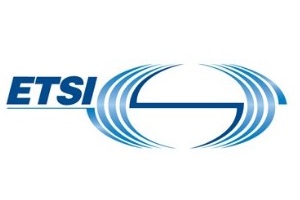ETSI launches DECT-2020 IoT radio interface for reliable, low-latency, massive machine comms

Developed by ETSI in the 1990s, the DECT standard (Digital enhanced cordless telecommunications) is implemented in more than a billion short-range communication devices around the world.
Now, the technology is taking a giant step forward with a new set of DECT-2020 New Radio (NR) standards: the ETSI TS 103 636 series defines an advanced radio interface applying modern radio technologies.
It is designed to provide a slim but powerful technology foundation for wireless applications deployed in various use cases and markets. DECT-2020 NR was developed to support broad and diverse wireless IoT applications requiring both ultra-reliable and low-latency communication needed in voice and industrial applications. It also supports massive machine-type communication with millions of devices in a network required in use cases such as logistics and asset tracking, industry 4.0 and building automation as well as condition monitoring.
ETSI DECT-2020 NR as a technology foundation is targeted for local area wireless applications, which can be deployed anywhere by anyone in no time. The technology enables autonomous and automatic operation with minimal maintenance effort. DECT-2020 NR supports mesh communication, with low latency communication links, enabling massive machine-type communications (mMTC) for industry automation without a need for infrastructure investments. It also supports ultra-reliable low-latency communications (URLLC) for professional wireless audio applications with point-to-point or multicast communications.

Thanks to its dynamic channel selection feature, DECT-2020 NR does not require frequency planning and the complexity of this technology is relatively low. The standard has a dedicated global frequency band at around 1900 MHz.
The DECT-2020 NR standard provides high deployment flexibility:
- Ultra-reliable point-to-point and point-to-multipoint wireless links
- Local area wireless access networks
- Self-organising local area wireless access network following a mesh network topology
“ETSI’s new standard is a great response to the needs industries have in digitalisation. The new standard brings mMTC and URLLC performance to a whole new level, which provides great flexibility to address large-scale and high-density applications in logistics and building automation, and low-latency applications in industry automation. In terms of bit rates, communication range and reliability, the DECT-2020 NR technology offers completely new opportunities for local and private networks as industrial companies, solution providers and other players can independently develop their own solutions and services,” explains Jussi Numminen, Vice Chair of the ETSI Technical Committee DECT.
Key technical features include:
The inherent feature of automatic interference management allows deployments without extensive frequency planning. The mesh networking capability of DECT-2020 NR enables application-driven network topologies and deployments, for instance in IoT and mMTC use scenarios, so that the link budget of classical cellular base station to user equipment constellations is no longer a limiting factor.
The DECT-2020 NR physical layer is suited to address 17 frequency bands below 6 GHz. The physical layer design is flexible, enabling scaling from 1,728 MHz channels to higher channel bandwidths and bitrates. It supports advanced OFDM signal form, channel coding, hybrid ARQ and fast link adaptation, transmit and receiver diversity, as well as MIMO operations up to eight streams. The DECT-2020 NR MAC layer standard combines the functionality of direct communication between devices for mesh, star or point-to-point communication topologies.
ETSI TS 103 636 series will be accompanied by additional features and improvements. In addition, the specification series will be amended with e.g. application-driven technical material, which is organised as a multi-part document, delivering profiles and application-specific solutions for various industries.
Comment on this article below or via Twitter @IoTGN
